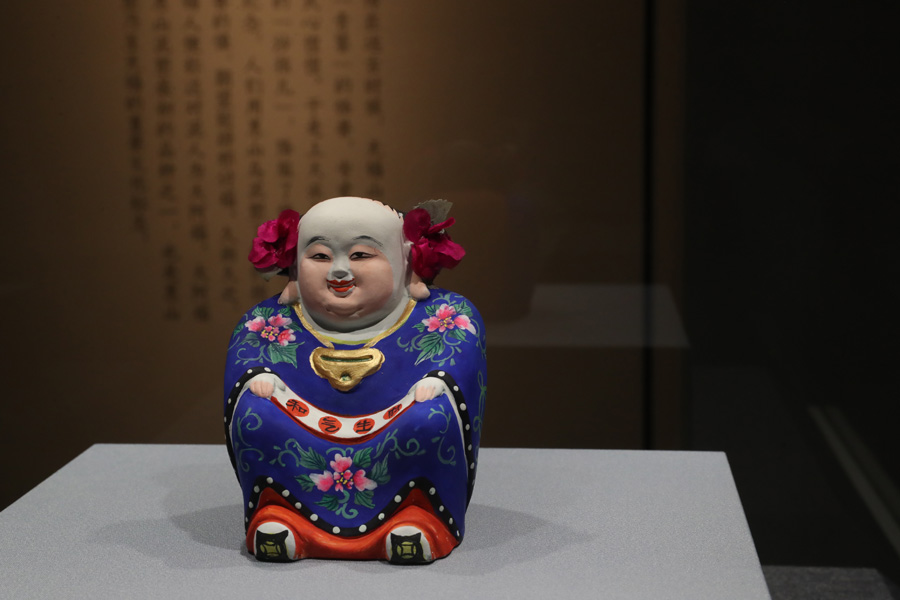Craftsmanship of Huishan's clay sculptures
 0 Comment(s)
0 Comment(s) Print
Print E-mail China Daily, June 18, 2019
E-mail China Daily, June 18, 2019

It has been passed down among clay artisans in Huishan that mature sculpting techniques contribute 30 percent to a good piece of work, while brilliant coloring adds the rest. It is gifted duos like Yu and Wang who have helped prolong the life of Huishan's clay art for centuries.
Yu is especially noted for sculpting opera characters. "When our teachers taught us how to recreate the scenarios in clay, they not only explained the plots, but also sang and performed them to help us better understand the roles and visualize the characters' facial expressions," she recalls.
"It is natural beauty rather than a perfect shape that artisans are looking for," Yu adds.
Wang says that the shaping of eyes, eyebrows and edges of the mouth all show off a craftsman's creativity, giving life to the figures in their hands. Small and elongated eyes indicate evilness, a nose like that of a lion suggests an internal power, and a slightly smiling mouth lends a great deal of tenderness to the character.
Wu Weishan, director of the National Art Museum of China, says the rich heritage of clay sculpting in Huishan reflects a full use of nature's gift-soft, sticky black clay-to create a booming industry and a dynamic cultural landscape that stretches back centuries-and one with an enduring aesthetic value that emphasizes simplicity and subtlety.
9b34b8bc-bfca-4209-9dd8-e7de971ecf58.jpeg)




Go to Forum >>0 Comment(s)